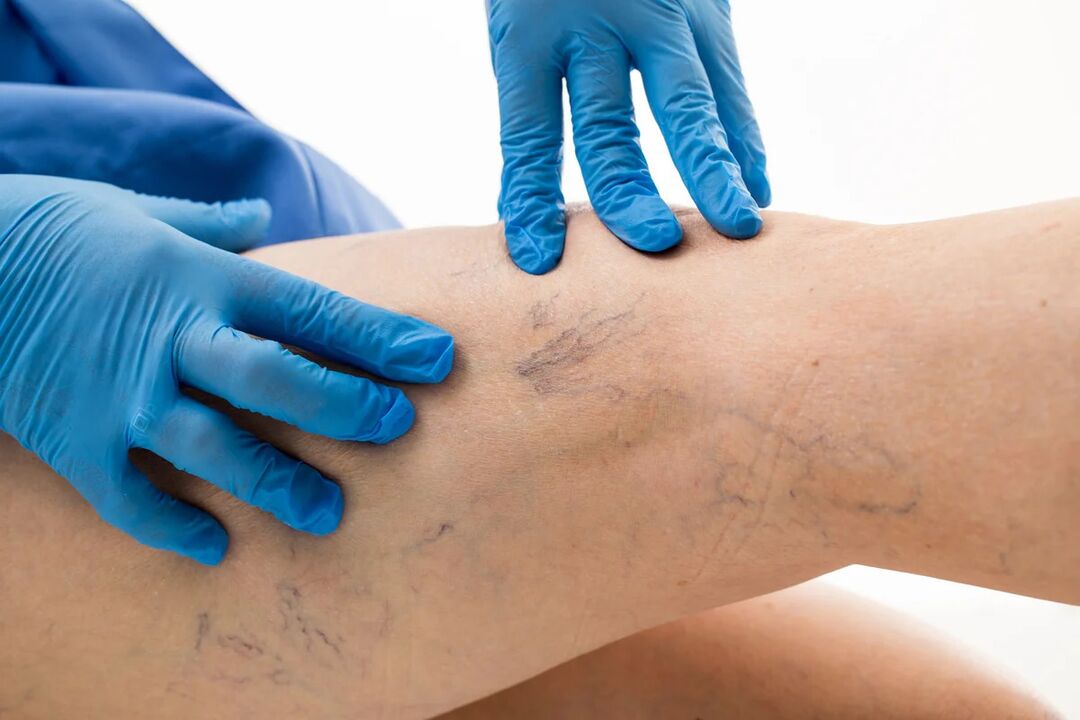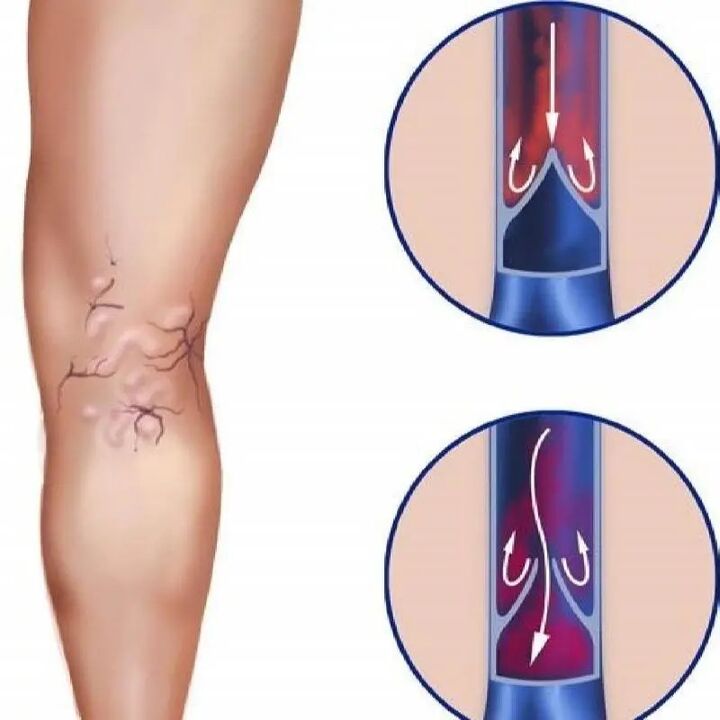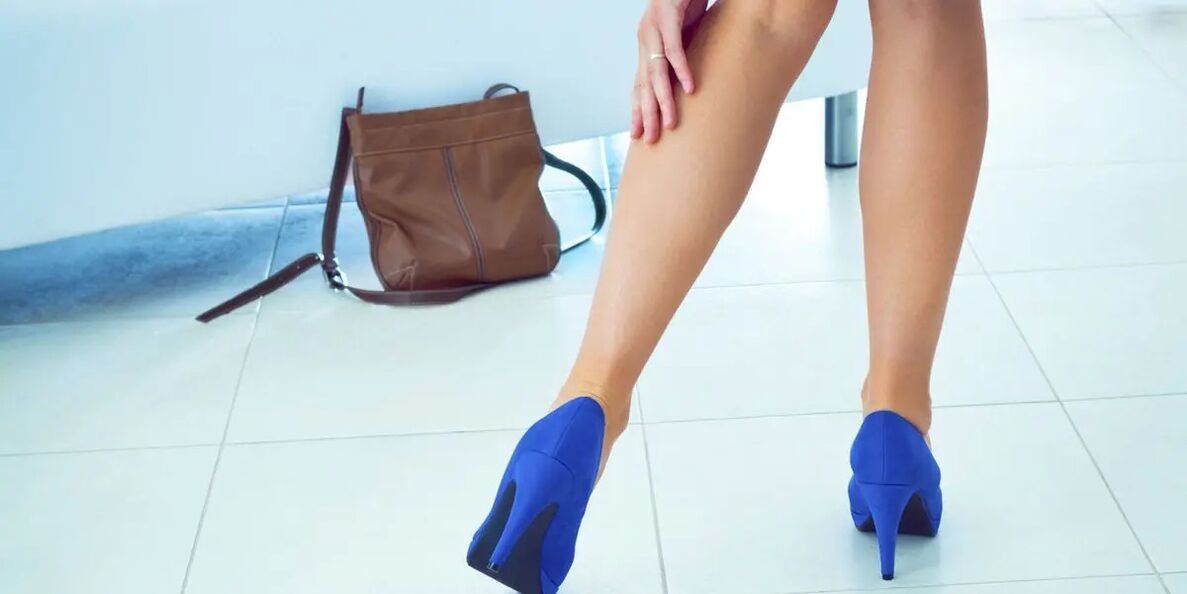Varicose veins from the lower ends or varicose veins of the lower ends - the expansion of surface veins, accompanied by impaired valve and blood flow failure.

This is the most common disease of peripheral vessels.According to epidemiological data, various forms of this disease are found in 26-28% of women and 10-20% of men of active age.
Risk factors for the development of varicose veins
Heredity and its role in the development of varicose veins are not found unambiguous confirmation.One of the main against -the presence of a genetic predisposition is the different frequency of varicose veins in ethnic Africans and their fellow tribe members who have emigrated to the United States and Western European countries.In addition, compared to colleagues of sedentary tribes, the frequency of varicose veins, which does not exceed 0.5%, emigrants have a reliable increase of 10 to 20%.In this sense, the conclusion is obvious about the predominance of a vary in pathogenesis of environmental factors, the characteristics of lifestyle and nutrition.
Pregnancy is traditionally considered one of the main risk factors for the development of varicose veins, in particular justifying more frequent damage (3-4 times) to women.It is generally accepted that the main provocative moments are an increase in the BCC (circulating blood volume) and the compression of the pregnant uterus of retroperitoneal veins.Meanwhile, the results of epidemiological studies indicate that only the second and subsequent pregnancies lead to a reliable increase in varicose veins by 20 to 30%.At the same time, the first signs of the disease are already appearing in the first trimester of pregnancy, when a sharp increase in the BCC or an increase in the pregnant uterus does not yet occur.
Obesity is a proven risk factor for varicose veins.At the same time, an increase in body weight index to 27 kg/m2 and above leads to an increase in disease frequency by 33%.
The high frequency of varicose veins in industrialized countries is to some extent due to nutritional characteristics.A high degree of processing and reduction of food in the diet of vegetables and raw fruits has led to a constant vegetable fiber deficiency necessary for venous wall remodeling and chronic constipation, which cause permanent increase in intra -air pressure.
Lifestyle has a significant impact on the development and course of varicose veins.In particular, the adverse effect of long -term static loads with lifting weights or a property in the standing position and sitting has been proven.In Asian countries, the most frequent use of chairs and chairs in the European part of the population has led to a reliable increase (3-4 times) in the frequency of varicose veins compared to people who are traditionally seated on rugs.
The hormonal disorders are involved in the pathogenesis of varicose veins.Its role in recent years has increased progressively, which is due to the wide use of hormonal contraception, the popularization of hormone replacement therapy in the period prior to menopause and in the treatment of osteoporosis.It is proven that estrogens and progesterone, as well as their derivatives, reduce the tone of the venous wall due to the gradual destruction of collagen and elastic fibers.
Clinical Image of Varicose veins
Varicose veins are a disease that is not indifferent to beautiful sex.A varizer of the veins of the female veins is sick on average three times more often than men.
Signs of varicose veins are tied extensions of subcutaneous veins, pain, gravity in the legs, swelling of the foot and the bottom of the leg, fatigue in the legs until the end of the day.The varicose nodes are often prone to the formation of blood clots and infection.Flebitis can develop - inflammation of blood vessels or thromboflebitis - inflammation of blood vessels complicated by blood clots.Throughout the veins, there are difficult and very painful cords.The skin changes, loses its elasticity and the color is dense and dark brown.With easy injury, ulcers occur.A young woman can become a disabled person at 40.

There are obvious symptoms that should be alert.
Varicose veins symptoms
- Pain.The causes of varicose veins are very, very numerous.A variety of pain in varicose veins is also very rich:
- Hot pulsating pain,
- Night cramps and itching in the muscles,
- Walking pain
- Pain along venous trunks,
- Pain and general pain in the legs.
- Swelling in the legs.
- A feeling of bursting and weight on the legs.
- It changes the skin.At first, the skin is dry, pigmentation appears - the skin of the legs darkens, covered with brownish "spots".Subsequently, several dermatitis, eczema and trophic disorders called in the form of poorly curative wounds until ulcers can join these symptoms.
- A complicated and elongated variza that projected above the surface of the skin of the legs and feet, with similar bag, cylindrical or mixed extensions.
- Vascular stars (teneaggioectasia).Yes, people with varicose veins are also included in the group of patients with small vein expansion, as the causes of their appearance are the same.
The initial stages of varicose veins development are very difficult to detect and diagnose, because in the early stages of the disease there is no main feature - varicose veins.And the first and first symptoms of varicose veins, such as the sensation of leg severity, moderate leg pain, increased fatigue, are also found with the early stages of arterial diseases, flat feet, lumbar osteochondrosis.
In such difficult cases, it is impossible to make your own correct diagnosis - you will need to consult a doctor or even several specialists - flexi, neurologist, surgeon and manual therapist.High -precision instrumental diagnostic methods such as ultrasound or phlebography will also be needed.
The first symptoms of leg varicose veins, along which you can suspect the onset of varicose veins, is an increase in the vein pattern on the leg skin.This defect, as we have already observed, more often observed by young women: on the legs or hips, they perceive wreaths, who were not there before.There may be no other complaints at the beginning of varicose veins.
And often these symptoms of a beginner disease precede the appearance of pain and other unpleasant sensations.Often, the first "findings" of veins are not accompanied by absolutely no unpleasant sensation.
The onset of development and the progression of varicose veins is already manifested by us from varicose veins to project above the surface of the skin.One or more.This is the main symptom of initial varicose veins disease.The varicose nodes can be detected more often on the inner surface of the legs or hips.With a long walk or prolonged position, a symptom of varicose veins such as fatigue, gravity in the legs, a feeling of burst (usually in calves) manifests itself.These symptoms are especially clearly manifested with prolonged stay in sitting or standing position.There is also painful or acute pain in places of varicose veins (dilated veins), seizures in the calf muscles, especially at night and sometimes at night.
The first signs of dysfunction in the veins are also manifested by the swelling of the legs until the end of the day.Edema usually occurs at night, especially after the prolonged position.After night, the swelling disappears completely.
These varicose veins symptoms initially pass quickly if you relax, especially if you lie down.However, the disappearance or significant decrease in these symptoms when walking and after night rest are very characteristic of the symptoms of varicose veins.
But the varicose veins, if they are not seriously involved, do not withdraw, progress.Over time, these symptoms of varicose veins appear as convincing of dark blue intradermal veins, protruding above the surface of the skin of the legs and feet and similar to the clusters of mature red grapes.All of this is accompanied by pain in the legs and calves, a feeling of warmth in the legs, night seizures in the calf muscles, swelling.Gradually, skin changes join these symptoms.At first, the skin is dry, darkens, a pigment appears in it - brown spots.A little later, the so -called trophic disorders begin to join: poorly healing explosions and even ulcers.
Pain begins to worry more and more often, especially in the afternoon or evening.
Diagnosis
Currently, the main accessible methods to diagnose varicose veins are:
- Ultrasound dopplerography.The most common method of primary diagnosis of vein diseases of the lower extremities is today ultrasound dopplaography.This method is based on the effect of Doppler, which consists of the fact that ultrasonic waves passing through the tissues are reflected from the movement of blood cells and alter their frequency.Highly sensitive sensors, correcting these changes, reproduces them with a special device (dopplerography) in the form of sound -like signs of the wind, or a graphical curve.
- Duplex (two -dimensional) angiography allows you to record an image of a venous vessel on the monitor screen in real time with a doppler assessment of blood flow.Triplex (three -dimensional) angiography, besides the above, allows for a colorful image of blood flow.
- Phlemopiography.Flebogography is a radiopacic vein study, which has been, and in some cases remains, the decisive diagnosis method of examining patients with veins and, especially in the case of their complications.
Varicose veins
The successful solution to the problem of varicose veins is composed of the sequential implementation of the following tasks:
- Elimination of varicose veins;
- Elimination of HVN signals;
- Prevention of the progression and relapse of the disease.

Ways to treat veins varicose veins
- Compression therapy;
- Conservative therapy;
- Surgical treatment (flexion);
- Sclerotherapy.
First of all, they try to treat varicose veins with conservative methods.Strictly speaking, this is not a method of treatment of varicose veins.All conservative methods in “varicose vein treatment” are directed, first of all, in preventing the disease and its complications.Conservative methods are also the only possible therapy if the patient is against serious indications to other treatment methods or if the patient refuses surgical treatment of varicose veins.The radical elimination of varicose veins syndrome is possible only surgically, at the same time, the functional result of treatment is of great importance, which implies the elimination or minimization of HVN manifestations.
The treatment of varicose veins should be complex and individual, including conservative and surgical treatment.The Potobologist of Doctor-Potobologist can only recommend the method of treating varicose veins based on your experience, but the decision always remains with you.























